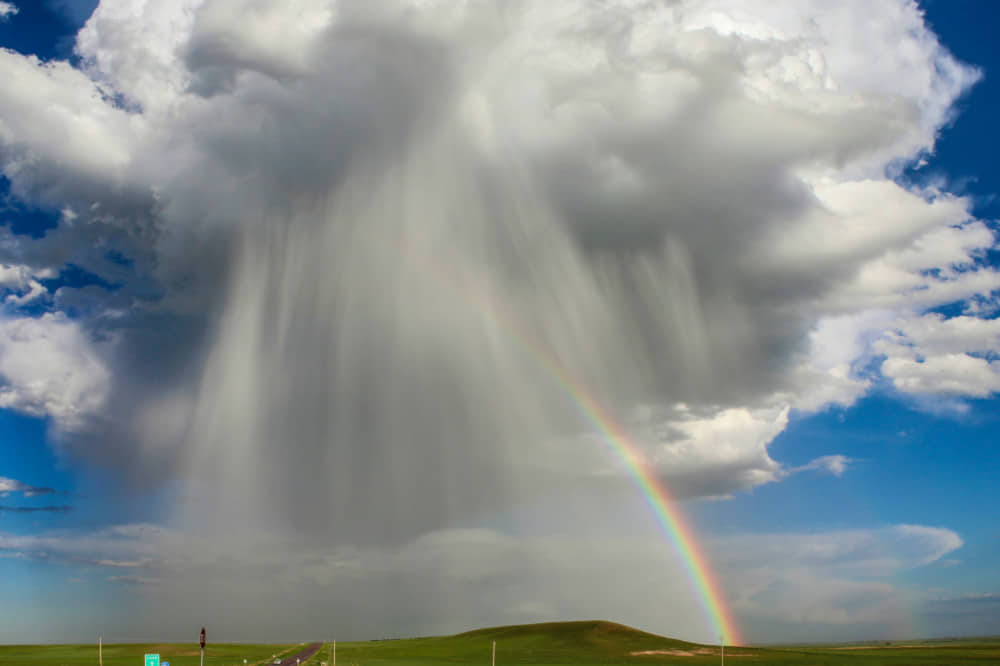Microbursts And The Dangers To Aircraft
- (1) Finals The aircraft is on final approach at a slow speed and low altitude.
- (2) Headwind Suddenly the aircraft experiences a sharp spike in indicated airspeed
as the aircraft meets the oncoming rush of air from the leading
edge of the microburst. If the pilots aren't aware of what is
happening, they'll reduce the throttles to slow the aircraft down.
- (3) Downdraft As the pilot is descending the aircraft back to its normal descent angle,
the aircraft will experience a sudden surge of downdraft and the winds will push
directly down on the aircraft, causing it to rapidly lose altitude.
The pilots will increase the throttle and try to pull the aircraft back up
to a safe altitude.
- (4) Tailwind In the last stage, the plane will experience a strong tailwind, greatly reducing
its airspeed, the tailwind decreases lift and makes it difficult to pull
the aircraft up. Because of its low speed, the aircraft is unable to attain
sufficient lift and since it is very close to the ground the chances are high
of the aircraft crashing.
All commercial aircraft and many commercial airports in the United States and around the world now have wind shear
detection systems to alert aircraft to the dangers of microbursts. Thanks to better training and major advances in technology,
the last commercial airplane crash in the U.S. attributed to a microburst was in 1994.
What Are Microbursts?
Relatively recent meteorological studies have confirmed the existence of microburst phenomenon around
these dangerous weather phenomena are small scale intense downdrafts which, on reaching the surface,
spread outward in all directions from the downdraft center. This causes the presence of both vertical and horizontal
wind shears that can be extremely hazardous to all types and categories of aircraft, especially at low altitudes. Due
to their small size, short life span, and the fact that they can occur over areas without surface precipitation,
microbursts are not easily detectable using conventional weather radar or wind shear alert systems.
The life cycle of a microburst is seldom longer than 15 minutes. An important consideration for pilots is
the fact that the microburst intensifies for about 5 minutes after it strikes the ground. Parent clouds producing
microburst activity can be any of the low or middle layer convective cloud types. Note, however, that microbursts
commonly occur within the heavy rain portion of thunderstorms, and in much weaker, benign appearing convective cells.
that have little or no precipitation reaching the ground.
Characteristics of microbursts include:
1. Size. The microburst downdraft is typically less than 1 mile in diameter as it descends from
the cloud base to about 1,000-3,000 feet above the ground. In the transition zone near the ground, the downdraft
changes to a horizontal outflow that can extend to approximately 2 1/2 miles in diameter.
2. Intensity. The downdrafts can be as strong as 6,000 feet per minute. Horizontal winds
near the surface can be as strong as 45 knots resulting in a 90 knot shear (headwind to tailwind change for a
traversing aircraft) across the microburst. These strong horizontal winds occur within a few hundred feet of the ground.
3. Visual Signs. Microbursts can be found almost anywhere that there is convective activity.
They may be embedded in heavy rain associated with a thunderstorm or in light rain in benign appearing virga.
When there is little or no precipitation at the surface accompanying the microburst, a ring of blowing dust may
be the only visual clue of its existence.
4. Duration. An individual microburst will seldom last longer than 15 minutes from the
time it strikes the ground until dissipation. The horizontal winds continue to increase during the first 5 minutes with
the maximum intensity winds lasting approximately 2-4 minutes. Sometimes microbursts are concentrated into a line structure,
and under these conditions, activity may continue for as long as an hour. Once microburst activity starts, multiple
microbursts in the same general area are not uncommon and should be expected.
Microburst wind shear may create a severe hazard for aircraft within 1,000 feet of the ground, particularly
during the approach to landing and landing and take-off phases. The impact of a microburst on aircraft can be sever
as the aircraft may encounter a headwind (performance increasing) followed by a downdraft and tailwind (both performance
decreasing), possibly resulting in terrain impact.





